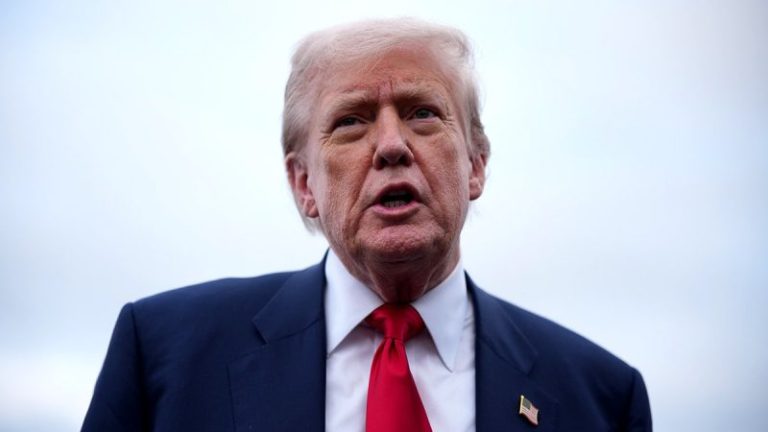On Thursday (July 31) Statistics Canada released gross domestic product figures for May. The data shows the Canadian economy shrank for the second month in a row, edging down by 0.1 percent.
The decline was headlined by decreases in the resource sector, which posted a 1 percent contraction, led by a 2.1 fall in the mining and quarrying subsector. Oil and gas extraction was also down, recording a drop of 0.8 percent, marking the first back-to-back months of negative growth for the subsector since April and May 2023.
However, the agency reported that advance figures for June show a reversal, with its data indicating a 0.1 percent growth during the month, and flat GDP for the second quarter. StatsCan will post its official figures on August 29.
The Bank of Canada held its rate meeting this week, opting to hold its interest rate steady at 2.75 percent, citing resilience in the economy despite the trade dispute with the United States.
The economic news comes against a backdrop of tariff threats from the United States. In July, the White House vowed to increase the tariff rate of non-CUSMA-compliant goods from Canada from the 25 percent imposed earlier in the year to 35 percent if a deal wasn’t negotiated by the August 1 deadline.
On Thursday evening, the night before the deadline, Donald Trump signed an executive order increasing levies on goods entering the US from Canada. While CUSMA-compliant goods are largely exempt, the new tariff rate will have a significant impact on Canada’s auto, steel and softwood lumber industries.
Canada is not alone, as new tariffs rates will be applied on imports from all countries that were part of his original April 2 announcement. Those countries that have successfully negotiated agreements will also pay tariffs, but at a lower rate. However, the US also announced that it won’t begin collecting tariffs on imports until August 7. The delay is intended to allow more time for completing negotiations and for US Customs to adjust to the new policy.
The United States also released a slew of economic news this week, with fresh GDP, inflation and jobs data.
The US Bureau of Economic Analysis (BEA) released its second-quarter advance GDP estimate on Wednesday (July 30). While it shows solid growth of 3 percent after a 0.5 decline in the first quarter, analysts suggest it may be masking underlying weakness in the overall economy.
Decreases in Q1 were mainly due to a rise in imports, which are deducted from GDP calculations, as companies stockpiled goods in anticipation of US tariffs taking effect. However, the second quarter’s increase was due to companies reducing imports and working through their pre-tariff stockpiles.
US GDP is up a modest 1.2 percent since the start of the year, well below the 2.5 percent growth rate in 2024.
On Thursday, the US BEA released its personal consumption expenditures index (PCE) data. The report shows that inflation surged to 2.6 percent in June on an annual basis, above analysts’ expectations of a 2.5 percent rise and up from May’s 2.4 percent. Less the volatile food and energy categories, PCE came in at 2.8 percent, matching numbers from the previous month.
How much tariffs played a role in that increase is uncertain, but the PCE is a critical factor for the Federal Reserve’s decision in setting its benchmark Federal Funds Rate.
The central bank board met for its July meeting on Tuesday (July 29) and Wednesday, and ultimately decided to continue to hold the rate at 4.25 to 4.5 percent. Although it noted there was less uncertainty compared to its last meeting, Powell noted that they were still unsure whether inflation due to tariffs would be a one-time increase or if it would have longer-term implications.
Finally, the US Bureau of Labor Statistics released July’s nonfarm payroll report on Friday (August 1), reporting that an estimated 73,000 jobs were added to the economy in July. While additional government and business reports resulted in significant downward revisions to the initial May and June job estimates, dropping May’s numbers from 144,000 to 19,000 added jobs and June’s from 147,000 to 14,000. The figures indicate a rapid slowdown in employment growth in the United States.
Outside of the pandemic, employment growth in the United States has recorded the slowest start to the year since 2010.
Following the report’s release, Trump fired Bureau of Labor Statistics Commissioner Erika McEntarfer, accusing her without evidence of manipulating job data to make him look worse. The decision has drawn wide-spread criticism and concern that government sources on economic data will no longer be trustworthy.
Markets and commodities react
In Canada, equity markets were negative this week as Canada was unable to secure a deal with the United States. Although it reached a new all-time high Wednesday, the S&P/TSX Composite Index (INDEXTSI:OSPTX) ultimately declined 1.3 percent over the week to close at 27,020.43 on Friday. The S&P/TSX Venture Composite Index (INDEXTSI:JX) fell further, moving down 5.08 percent to 761.21. The CSE Composite Index (CSE:CSECOMP) was the lone gainer, rising 0.76 percent to 134.37.
US equity markets were broadly down on Friday on the new US tariffs and poor job data. The S&P 500 (INDEXSP:INX) fell 2.07 percent to 6,238.00, the Nasdaq 100 (INDEXNASDAQ:NDX) dropped 1.89 percent to 22,763.31 and the Dow Jones Industrial Average (INDEXDJX:.DJI) shed 2.61 percent to 43,588.57.
In precious metals, after falling mid-week, the gold price rebounded sharply on Friday, ultimately ending the week up 0.77 percent to US$3,362.94 by Friday at 4 p.m. EDT. Meanwhile, the silver price dropped dramatically during the week. While it also bounced Friday, it still fell 5.66 percent to US$37.01.
In base metals, copper prices plummeted 23.16 percent to US$4.48 per pound after President Trump announced refined copper exemptions to the 50 percent copper tariff earlier in the week. The S&P GSCI (INDEXSP:SPGSCI) was up mid-week but slumped on Friday, registering a 0.57 percent loss to finish the week at 545.59.
Top Canadian mining stocks this week
How did mining stocks perform against this backdrop?
Take a look at this week’s five best-performing Canadian mining stocks below.
Stock data for this article was retrieved at 4 p.m. EDT on Friday using TradingView’s stock screener. Only companies trading on the TSX, TSXV and CSE with market capitalizations greater than C$10 million are included. Mineral companies within the non-energy minerals, energy minerals, process industry and producer manufacturing sectors were considered.
1. Helius Minerals (TSXV:HHH)
Weekly gain: 72.94 percent
Market cap: C$48.93 million
Share price: C$1.47
Helius Minerals is a precious metals exploration company with a portfolio of assets in Nevada and Brazil.
The company has spent the first part of the year fundraising in support of the acquisition of Colossus Minerals and its 75 percent stake in the Serra Pelada gold-platinum-palladium project in the Para state of Brazil.
In 2009, Colossus reported significant assay results following its early exploration of the site, with one drill hole returning 8.04 grams per metric ton (g/t) gold, 154.5 g/t platinum and 245.8 g/t palladium.
The company had already completed most of the construction for the underground mine in 2013 when its dewatering measures at the site failed to prevent water ingress in the mine. Colossus was not able to finance the work necessary to fix the issues and became insolvent, putting the mine on care and maintenance.
In 2023, Colossus’ former geologist Christian Grainger was named Helius President and CEO.
On May 8, Helius reported that Colossus shareholders approved the sale of the company and its assets. Under the terms of the deal, Helius said it has a 12 month exclusivity period to conduct financing and also to develop a plan that is compliant with local mining laws and regulations. It also stated that it will need to address outstanding debts and a rehabilitation strategy for the site.
Shares gained this week, but the company has not issued further news.
2. Labrador Gold (TSXV:LAB)
Weekly gain: 58.82 percent
Market cap: C$20.4 million
Share price: C$0.13
Labrador Gold is an explorer focused on the advancement of its assets in Newfoundland and Labrador, and Ontario, Canada.
The company owns the Hopedale gold project in Eastern Labrador. The site hosts 998 claims and five licenses covering an area of 249 square kilometers in the Florence Lake greenstone belt.
In an announcement on February 8, the company reported high-grade gold from 2023 rock samples at the Fire Ant target, with grades of up to 106 g/t gold and 20.4 g/t silver. Additional rock and soil samples from other targets at Hopedale show grades of up to 0.28 percent nickel, 0.97 percent zinc and 3,493 parts per million copper.
Labrador also owns the Borden Lake project near Timmins, Ontario. Exploration at the site has been limited, mainly consisting of till samples and geophysical surveys to target areas for drill testing.
In a news release on February 19, Labrador said it was planning to conduct exploration work at both properties in 2025. On June 19 the company announced that it had mobilized to the Hopedale property and would focus on an area along the Thurber Gold trend at the northern portion of the site. It did not provide an update on exploration at the Borden Lake.
The company has not released news in the past week.
3. Torq Resources (TSXV:TORQ)
Weekly gain: 52.94 percent
Market cap: C$21.37 million
Share price: C$0.13
Torq Resources is an exploration company working to advance its Santa Cecilia gold and copper project in Chile.
Torq acquired the property through an option agreement in October 2021. The company can earn a 100 percent stake in the property if it makes a total of US$25 million before October 21, 2028, and exploration expenditures of US$15.5 million by October 21, 2025.
The deal will also see the original owner retain a 3 percent net smelter return, half of which can be purchased by Torq based on the fair value of the project.
The site covers an area of 3,250 hectares and lies adjacent to the Newmont (TSX:NGT,NYSE:NEM) and Barrick Mining (TSX:ABX,NYSE:B) owned Norte Abierto project, the fourth largest undeveloped gold project in the world.
In late 2024, Torq entered into a joint venture with Gold Fields (NYSE:GFI), in which Gold Fields can earn up to a 75 percent indirect interest in the project through a US$48 million investment over six years, with minimum annual spending of US$6 million.
On July 17, Torq completed the first drill program at the project under the joint venture, The work consisted of five holes covering 4,062 meters and was designed to test the undrilled Gemelos Norte target and to follow up on the Pircas Norte target discovered during the 2024 drill campaign.
Torq’s most recent announcement came on July 31, when it terminated its option to acquire the Margarita project in Chile due to financial constraints and a shift in focus to Santa Cecilia. It also said it would retain its 100 percent interest in the La Cototuda concession, which is surrounded by Margarita and which it believes would be necessary for any future development at Margarita.
4. Happy Creek (TSXV:HPY)
Weekly gain: 41.18 percent
Market cap: C$18.45 million
Share price: C$0.12
Happy Creek Minerals is an explorer focused on advancing a portfolio of assets in British Columbia, Canada.
Its primary focus has been on its Fox tungsten property located in the South Caribou region of the province. It comprises 135.9 square kilometers of mineral tenure and hosts deposits containing tungsten, molybdenum, zinc, indium, gold and silver. In total, 21,125 meters of exploration drilling have been carried out at the site.
The most recent news came on July 16 when Happy Creek announced a non-brokered private placement to raise gross proceeds of up to C$3.25 million in flow-through units at C$0.07 per share and non-flow-through units at C$0.05 per share. The following day, Happy Creek upsized the offering to C$3.75 million.
The company plans to use the gross proceeds for drilling, exploration and development at Fox, as well as other exploration work in the Caribou.
5. Star Copper (TSXV:STCU)
Weekly gain: 38.78 percent
Market cap: C$58.81 million
Share price: C$2.04
Star Copper is an exploration company with a portfolio of assets in British Columbia.
Its flagship Star project, located in BC’s Golden Triangle, consists of 19 mineral claims covering an area of 6,829 hectares of crown lands. The property hosts five high-priority targets, which have seen exploration dating back to 2013.
The most recent exploration update from Star came on Tuesday, when the company provided a summary of its ongoing drill program at the site and said it was halfway through a six-hole, 4,000 meter drill campaign designed to test mineralized zones laterally and at depth.
The company has also been advancing work at its Indata property, where it holds a 60 percent optioned interest. The site in northern BC consists of 16 mineral claims across 3,189 hectares and hosts mineralization of copper, gold and molybdenum.
In a July 10 news release, the company reported that soil grids that were deployed to test for gold and copper have also returned clusters of anomalous antimony that exceed 100 parts per million over 5 kilometers.
Additionally, the company announced on July 16 that it had entered into an agreement to acquire a 100 percent interest in the Copperline property in North-central BC. The project consists of eight mineral claims covering 4,502 hectares and exploration at the site has produced a highlighted assay of 2.54 percent copper, 50.4 g/t silver over 25 meters.
FAQs for Canadian mining stocks
What is the difference between the TSX and TSXV?
The TSX, or Toronto Stock Exchange, is used by senior companies with larger market caps, and the TSXV, or TSX Venture Exchange, is used by smaller-cap companies. Companies listed on the TSXV can graduate to the senior exchange.
How many mining companies are listed on the TSX and TSXV?
As of February 2025, there were 1,572 companies listed on the TSXV, 905 of which were mining companies. Comparatively, the TSX was home to 1,859 companies, with 181 of those being mining companies.
Together the TSX and TSXV host around 40 percent of the world’s public mining companies.
How much does it cost to list on the TSXV?
There are a variety of different fees that companies must pay to list on the TSXV, and according to the exchange, they can vary based on the transaction’s nature and complexity. The listing fee alone will most likely cost between C$10,000 to C$70,000. Accounting and auditing fees could rack up between C$25,000 and C$100,000, while legal fees are expected to be over C$75,000 and an underwriters’ commission may hit up to 12 percent.
The exchange lists a handful of other fees and expenses companies can expect, including but not limited to security commission and transfer agency fees, investor relations costs and director and officer liability insurance.
These are all just for the initial listing, of course. There are ongoing expenses once companies are trading, such as sustaining fees and additional listing fees, plus the costs associated with filing regular reports.
How do you trade on the TSXV?
Investors can trade on the TSXV the way they would trade stocks on any exchange. This means they can use a stock broker or an individual investment account to buy and sell shares of TSXV-listed companies during the exchange’s trading hours.
Article by Dean Belder; FAQs by Lauren Kelly.
Securities Disclosure: I, Dean Belder, hold no direct investment interest in any company mentioned in this article.
Securities Disclosure: I, Lauren Kelly, hold no direct investment interest in any company mentioned in this article.
This post appeared first on investingnews.com










